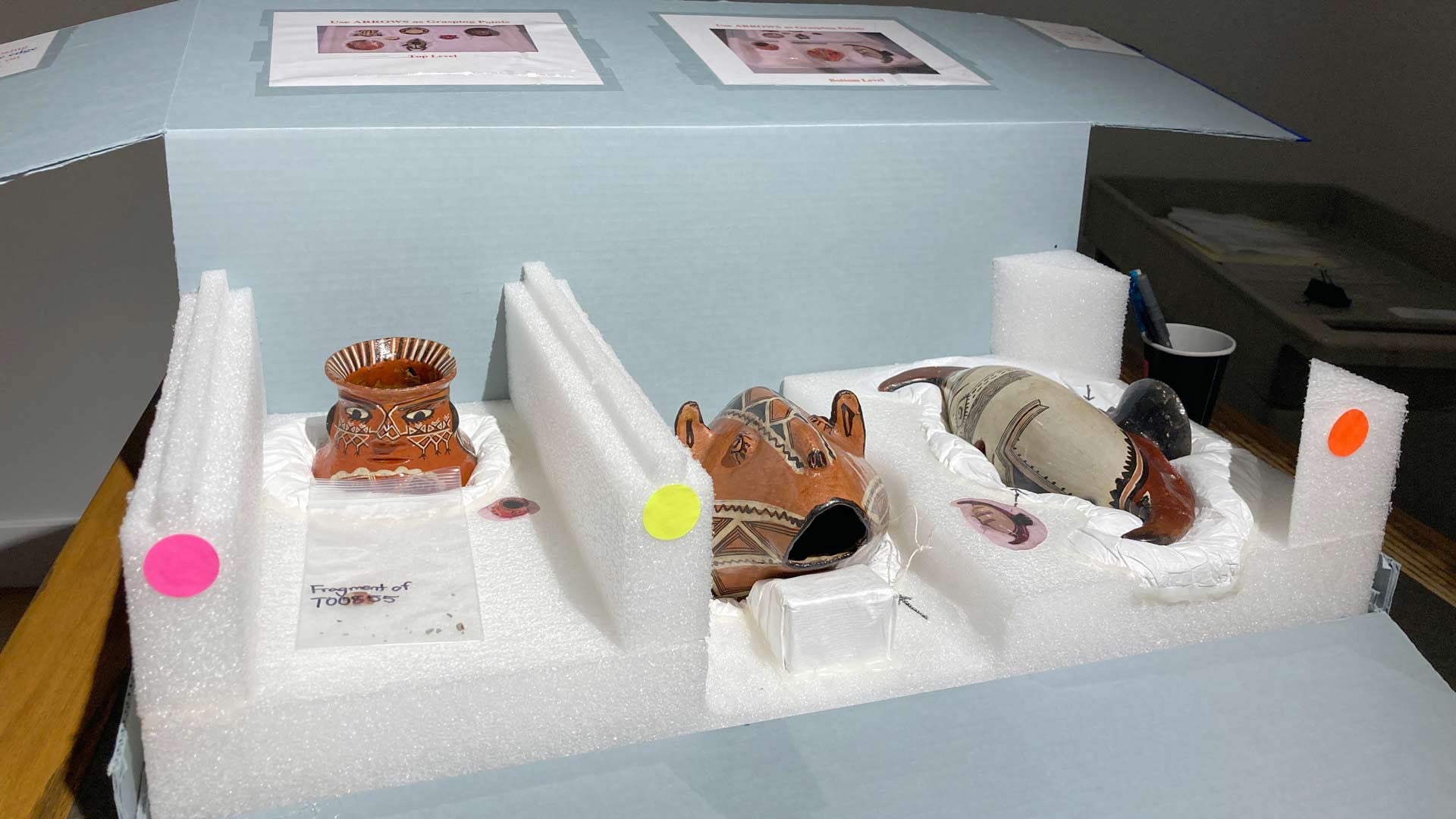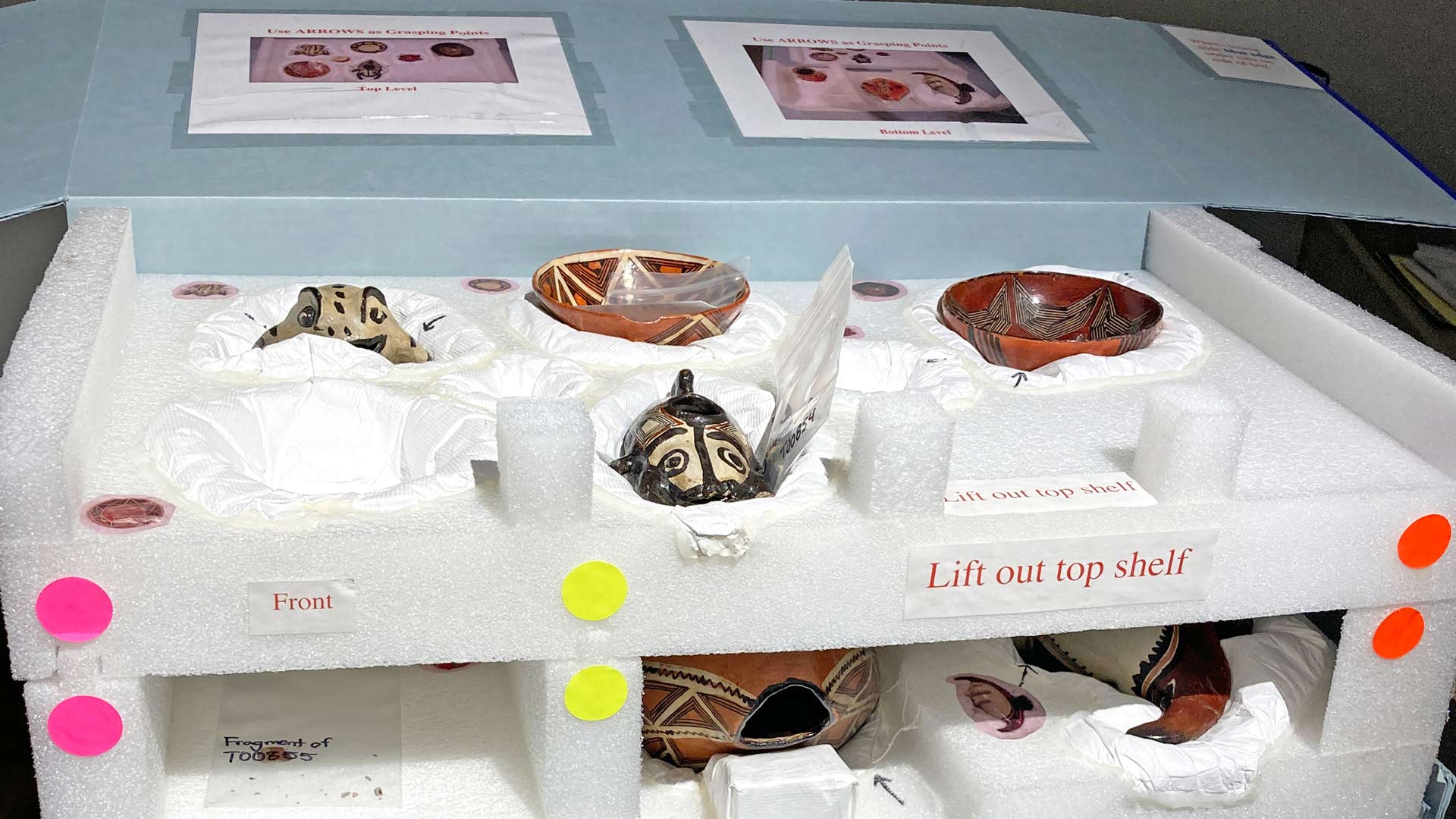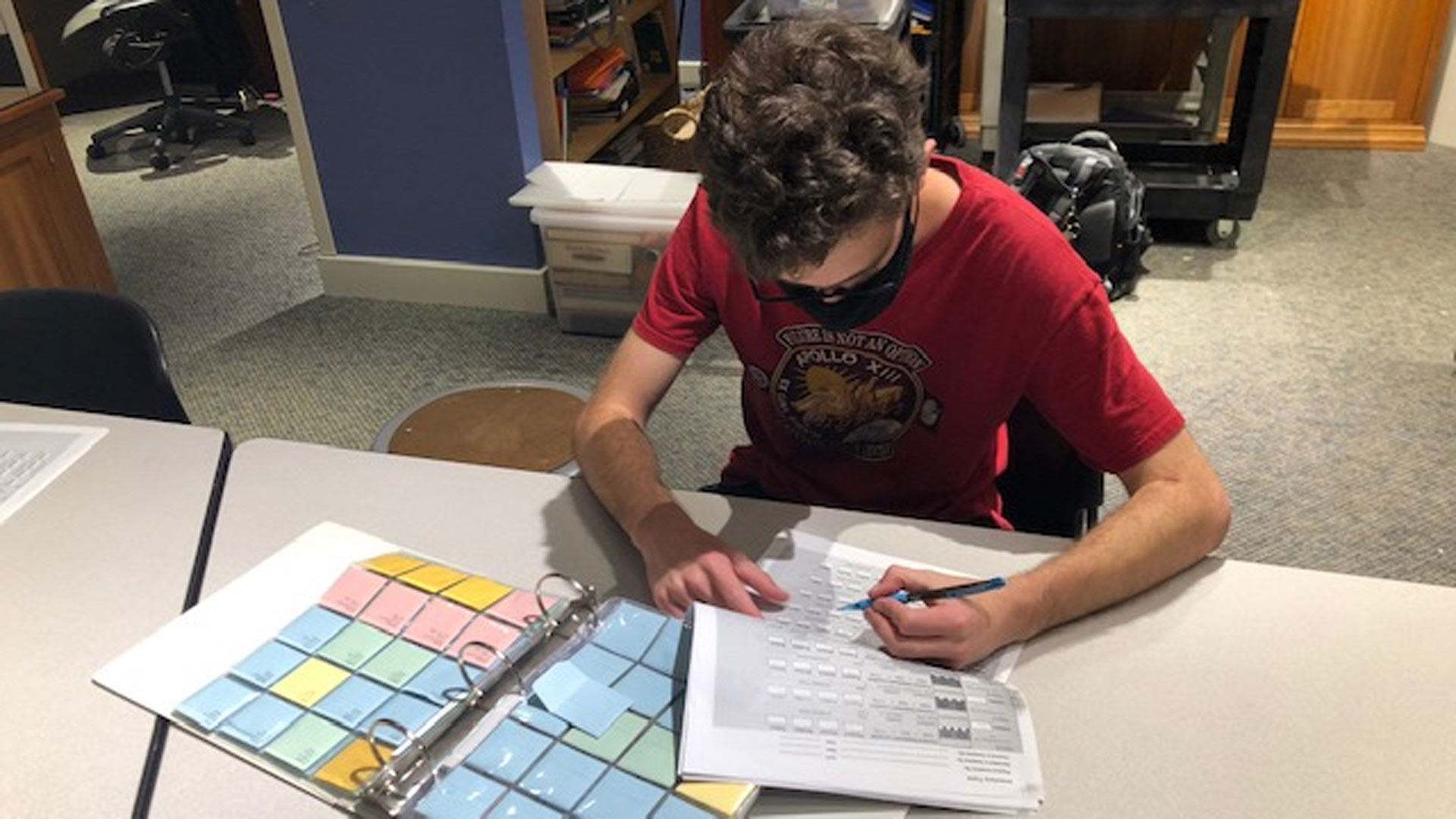
Keeping Track of Teaching Collections
- Post Date: 8/23/2021
- Author: Beth Watkins, education and publications coordinator
- Reading Time: 2 minute read
This summer, the Education section is performing an inventory of the Museum’s teaching collections. These are objects that are held especially for use in school and public programming. Many of them can be touched or handled by anyone, and others are loaned out to educators for in-depth use in school classrooms, scout meetings, and other learning opportunities. Some of these pieces can also travel easily, so our staff takes these objects to information fairs and community open houses. You may see items from the teaching collection on display around town or even at other museums.
Like the museum’s main artifact collection, some of these objects were collected decades ago according to guidelines that no longer meet professional standards of best practice or simply do not meet Spurlock’s current educational needs and methods for best serving east central Illinois. As we work through the objects, some may be deaccessioned through formal channels, which is also a standard process in museum work. The decision to deaccession comes through careful research into each piece, examination of its physical condition, and consideration of its potential educational use.
In addition to locating each of the 7,000 objects in this collection and making those assessments, we’re taking the opportunity to evaluate the storage systems we use and to give them some spring cleaning. Even with the Museum’s rigorous regular cleaning, dust finds its way to shelves!
All textiles are being re-folded so that permanent creases don’t form (you can read more about how the main artifact collection textiles are stored in the Textile Rolling and Reorganization blog post), and Ryan is reorganizing and rehousing paper objects into a new system of portfolios. Below, Assistant Director of Education Kim Sheahan Sanford refolds a Maya textile from Guatemala.
Special thanks go to Education assistant Joanna Wozniak for her work on this project, as well as for recruiting her son John to volunteer with us!
-
- Share:
- Subscribe to Newletter
- Giving



